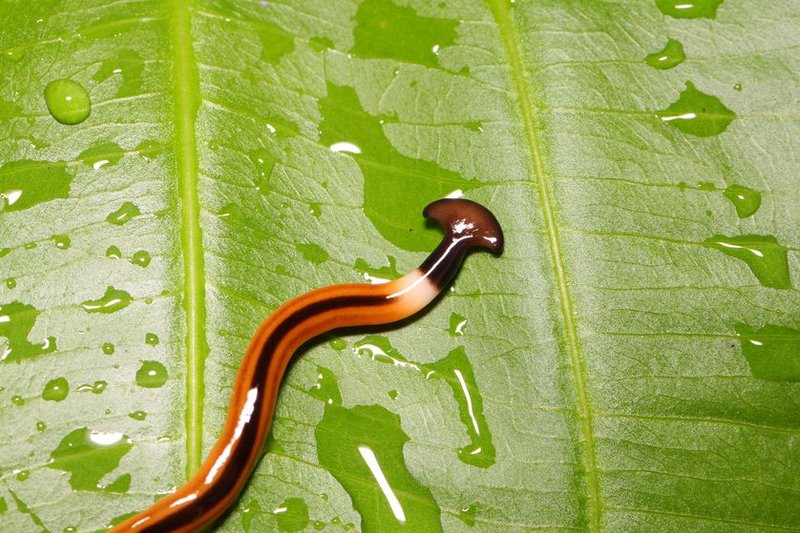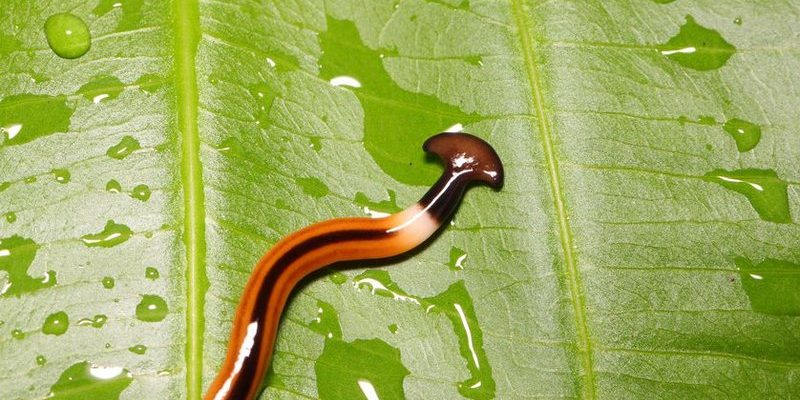
Hammerhead worms, scientifically known as **Bipalium**, are native to tropical regions but have made their way into various environments around the globe. Like that curious friend who just can’t resist popping into every conversation, these worms are becoming a common sight in gardens. Their presence raises important questions—specifically about how they interact with soil ecosystems. Do they bring benefits, or are they nothing but trouble?
Let me explain. As we dig deeper into this topic, we’ll look at the biology of hammerhead worms, their potential benefits, the problems they might cause, and how they fit into the larger picture of soil health. Along the way, I’ll share some insights that might surprise you!
Understanding Hammerhead Worms
To truly get a grip on how hammerhead worms affect soil health, we first need to understand what they are and how they live. These worms can range from a few inches to an impressive foot long. They’re named for their distinctive heads that resemble a hammer’s shape, which gives them a rather, let’s say, unforgettable appearance!
Their main diet consists of small invertebrates, particularly **earthworms**. Earthworms are often hailed as soil heroes because they aerate the soil and help with nutrient cycling. So, when hammerhead worms start munching on these beneficial critters, it raises a red flag. You might be thinking, “Wait, if they’re eating my earthworms, does that mean they’re bad for my soil?”
The answer isn’t a simple yes or no. While hammerhead worms can reduce earthworm populations, they also reflect the health of the ecosystem they’re in. Like an uninvited guest at a dinner party, they might not belong, but their presence tells a story about what’s happening in the environment.
The Role of Hammerhead Worms in Soil Ecosystems
So, what role do these worms play in soil ecosystems? On one hand, they can help regulate the populations of certain organisms, which might be beneficial in some cases. Think of them like nature’s pest control squad, keeping the numbers of certain invertebrates in check. This can help maintain biodiversity, which is essential for a healthy ecosystem.
However, the downside is significant. Hammerhead worms can also disrupt the delicate balance of the soil food web. By preying on earthworms, they may reduce the amount of organic matter being broken down, which can lead to poorer soil health over time. It’s like cutting off the head of a hydra—while it may temporarily seem fine, it could eventually lead to a more substantial problem down the line.
Also, here’s the thing: hammerhead worms can reproduce quickly. A single worm can lay numerous eggs, leading to rising populations in a garden. This rapid reproduction can disrupt the local ecosystem even further, creating a cycle of imbalance that’s hard to correct.
Benefits of Hammerhead Worms
Despite their negative points, hammerhead worms do have a few potential benefits worth mentioning. For one, they can contribute to the *decomposition process* by breaking down smaller detritus in the soil. When they feed, they help mix organic material into the soil, which can enhance nutrient availability and even promote microbial activity.
Additionally, their presence can indicate other environmental changes. If you spot hammerhead worms thriving in your garden, it might be a sign that conditions are right for other organisms to flourish—though not necessarily earthworms. It’s like checking if your favorite coffee shop is busy; if it is, there might be something good happening!
Still, relying on hammerhead worms to improve soil health might not be the best strategy. Their positive effects are often overshadowed by the problems they can create for more beneficial soil organisms. So, while they may have some perks, it’s essential to keep an eye on the overall balance in your garden.
The Harmful Side of Hammerhead Worms
Now, let’s dive into the darker side of hammerhead worms. As I mentioned, these worms primarily prey on earthworms, which can lead to decreased soil fertility over time. Without enough earthworms, your soil may become compacted, less aerated, and unable to retain moisture effectively. That’s a recipe for plant stress!
Another concern is their potential to disrupt the soil food web. Healthy soil is like a bustling city, filled with various organisms working together. When hammerhead worms invade, they can cause chaos. The result? A less diverse ecosystem, making it vulnerable to pests and diseases.
Furthermore, hammerhead worms can be neurologically toxic to other organisms, including some insects and small mammals. If they’re causing harm to these creatures, it raises questions about the broader impact on biodiversity. You might think of them as a piece of a puzzle that doesn’t quite fit, throwing the whole picture off balance.
Managing Hammerhead Worms in Your Garden
If you’ve spotted hammerhead worms in your garden and want to manage their population, there are several strategies you can try. First off, it’s a good idea to monitor your soil health regularly. Keeping track of earthworm populations and overall soil fertility can give you a clearer picture of what’s going on.
Here are some tips to help you manage hammerhead worms:
- Encourage beneficial organisms: Foster a thriving environment for earthworms and other beneficial insects. You can do this by adding organic matter to your soil, like compost, which creates a nutrient-rich habitat.
- Avoid pesticides: Be cautious when using any chemical treatments, as they can harm beneficial bugs while having little effect on hammerhead worms.
- Hand remove: If you find them, consider removing hammerhead worms by hand. Just be sure to wear gloves, as they can have toxic effects on pets and other wildlife.
- Monitor moisture levels: Keep your garden well-watered but not soggy. Healthy soil can help support the growth of earthworms while potentially minimizing the hammerhead worm population.
Keeping a close eye on your soil ecosystem can also help you identify any changes in plant health or other organisms’ populations. The more vigilant you are, the better you can respond to any imbalance.
So, where do hammerhead worms land on the beneficial-or-harmful scale? The truth is, they’re a bit of both. While they have some beneficial aspects within their ecosystems, the harm they can cause—especially to earthworm populations—far outweighs these positives.
In the grand scheme of soil health, maintaining a balance is crucial. Hammerhead worms can disrupt that balance, leading to potential long-term issues in your garden or landscape. Keeping your soil healthy, rich, and full of diverse organisms is the goal here, and paying attention to what’s happening below ground can make all the difference.
Ultimately, the best strategy is to foster a healthy garden ecosystem that minimizes the chances of unwelcome guests like hammerhead worms overpowering your beloved plants. With a little knowledge and diligent care, you can create a nutrient-rich environment where beneficial organisms thrive!

